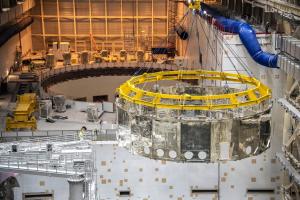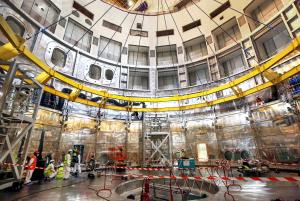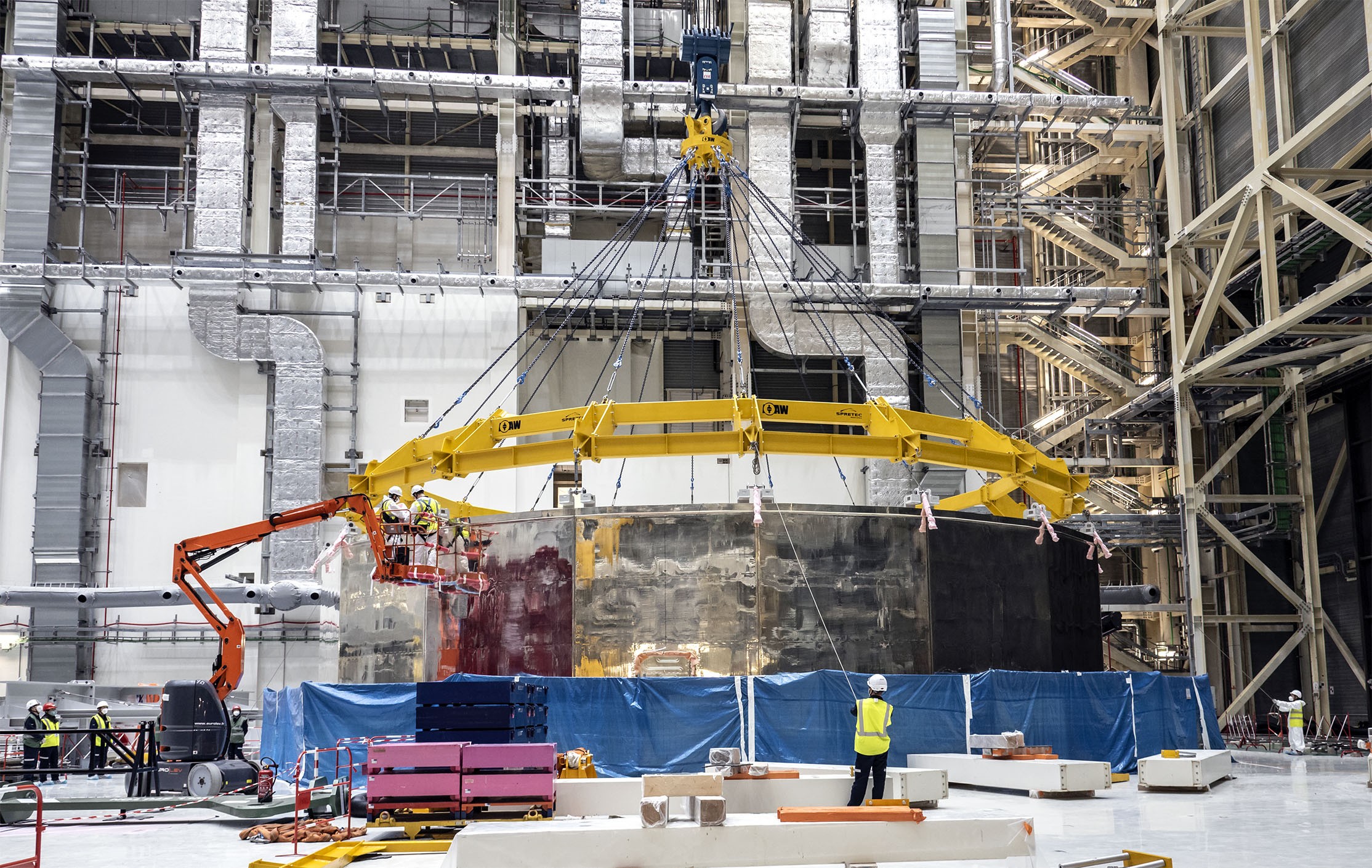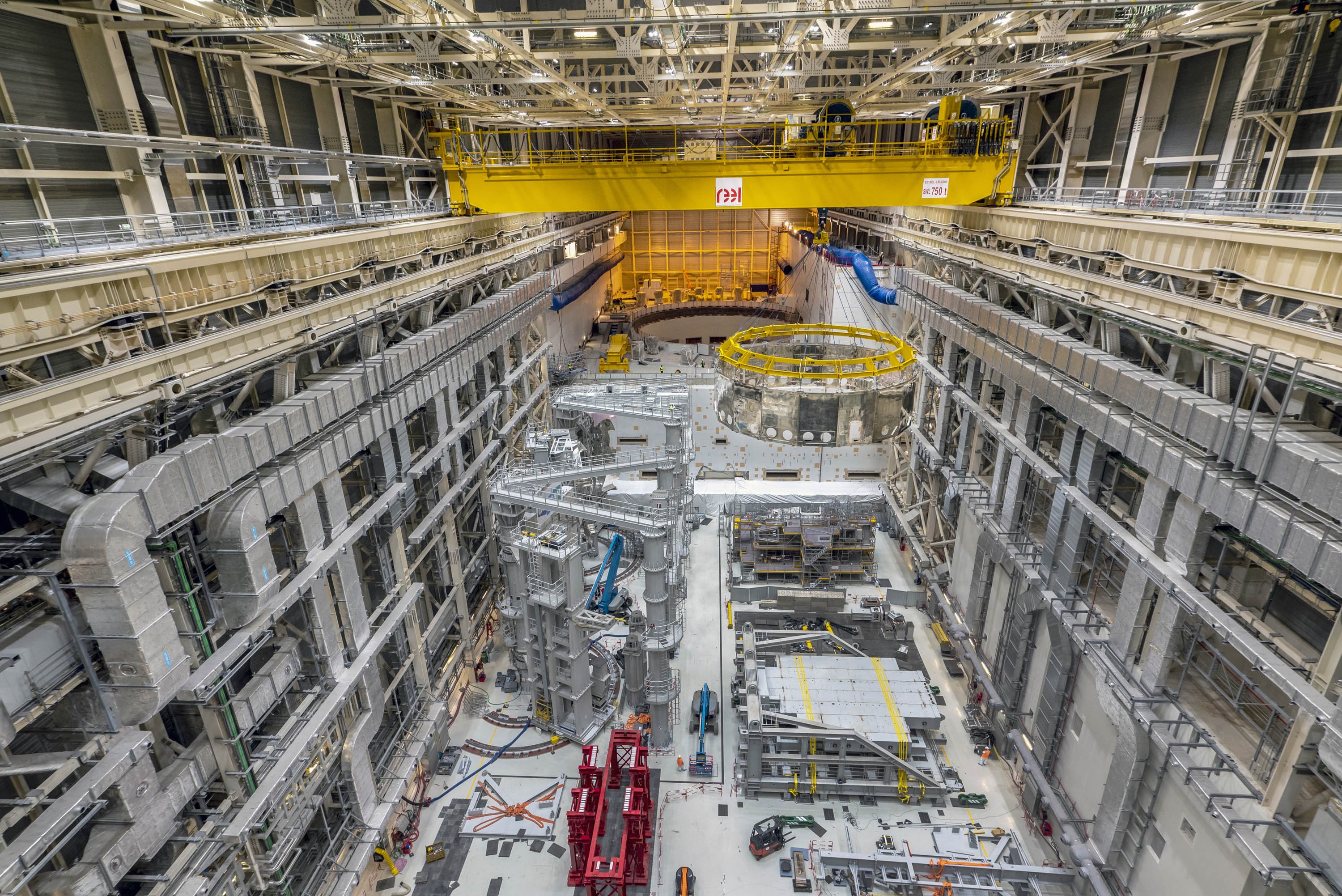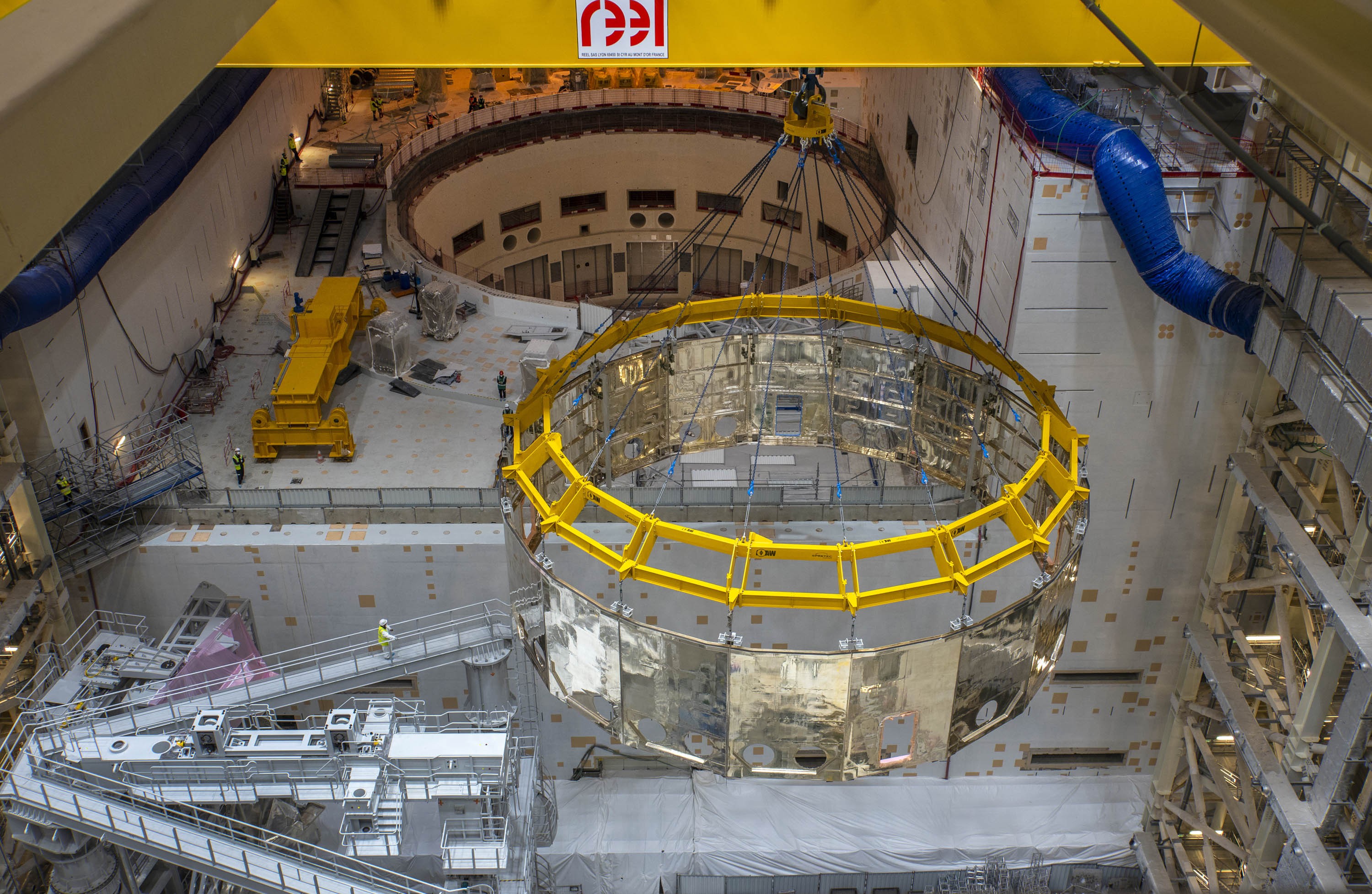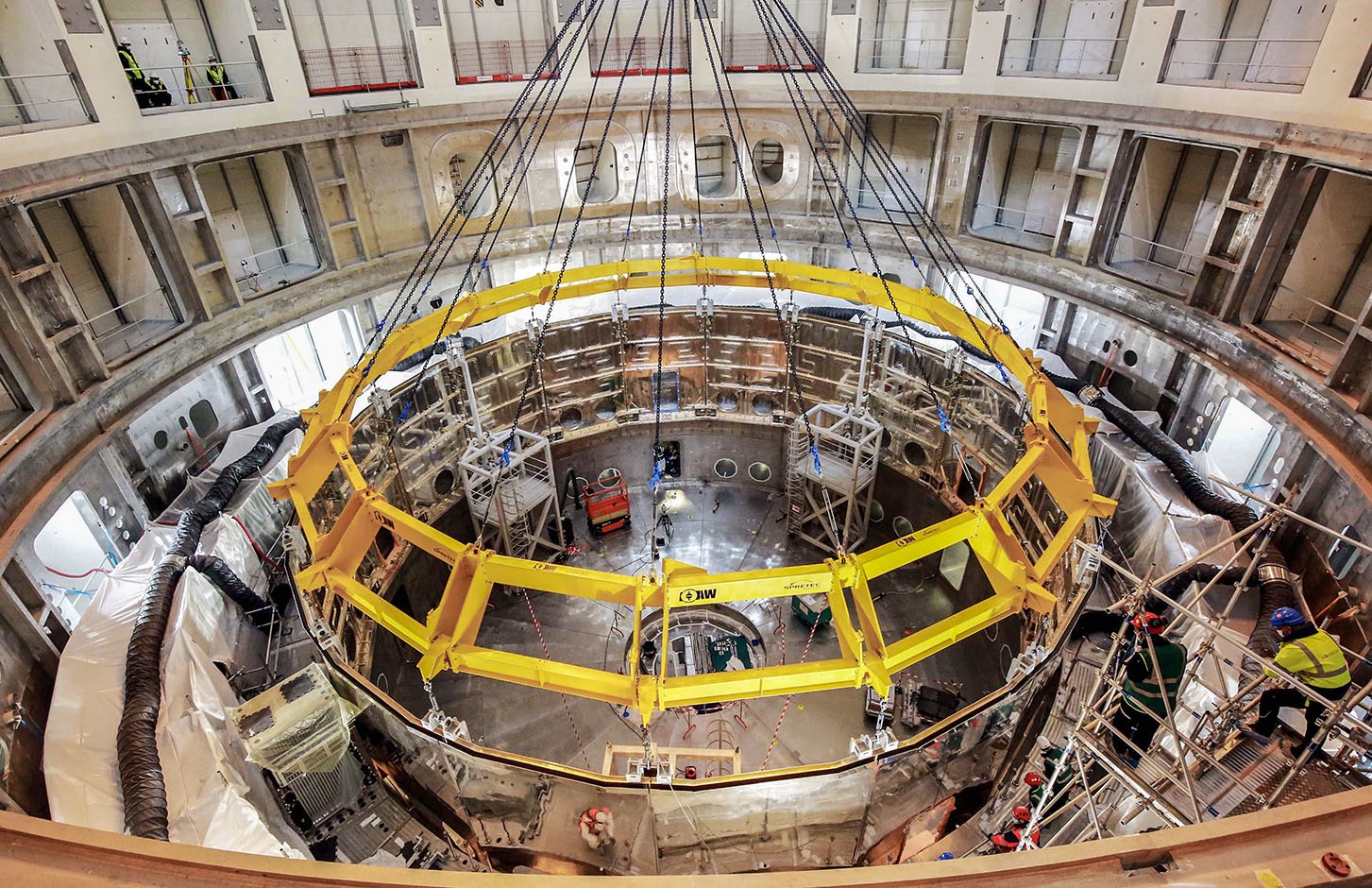A "strong back" for a fragile component
The lower cryostat thermal shield is a large silver-plated component, circular in shape and five metres tall, which fits inside the depression in the cryostat base to form a heat barrier to protect the superconducting magnets. Twenty metres in diameter and weighing approximately 50 tonnes, it is so thin (10 millimetres) that crane operators use the word "skin" to describe it. Lifting such a fragile component and preventing potential deformation throughout the lifting, transfer and installation operations, called for a "strong back."
What operators call a "strong back" is an extremely rigid circular lifting device that interfaces with the component through 18 attachments, equally distributed around its circumference. The 23-tonne device is attached to the overhead crane by a single hook, which facilitates the centring of the load and ensures perfect balance.
Following the installation of the cryostat base and lower cylinder, in May and August of last year respectively, the operation on Thursday 14 January was another memorable moment in the assembly of the ITER device. The aspect of the component, whose silvery surface reflected the colours and distorted shapes of the environment, its apparent fragility, and its delicate rigging all contributed to the grace of the event.
In a sequence that is now familiar the load was first lifted a few centimetres while its balance was checked and metrology was performed, before it was hoisted to cruising altitude some 23 metres above the floor of the Assembly Hall. Once aligned with the axis of the assembly pit, the journey began—approximately 100 metres at the relatively fast speed of 2 metres per minute, marked by the delicate passage over the tall assembly tools along the way and over the wall that separates the Assembly Hall proper from the opening of the tokamak pit.
When the component was positioned directly above the pit, it remained stationary for a time as real-time metrology was performed once again. During its transfer however, the load had rotated a few degrees and the temporary vertical rails inside the component, designed to fit into the guiding device of the "alignment tools" at the bottom of the pit, were slightly off target.
As is often the case in the last stages of installing large components, the final approach is prepared by delicately pulling on ropes until perfect alignment is achieved. In last Thursday's operation, this routine technique was made more difficult because of the presence of a recently installed coil gravity support whose protruding anchor bolts left very little room to manoeuver.
Such "unexpected difficulties," stemming from the small gaps and complex interfaces between components are, and will be, quite common throughout the ITER machine installation phase. On Thursday, operators dealt with it just as they have always done—with reactivity and ingenuity.
A little past 4:30 p.m., two hours after having reached the pit and five since the beginning of the lift, the lower cryostat thermal shield was in the expected position at the bottom of the pit. Three hours later, the load was transferred from the crane to an array of hydraulic jacks positioned on the base. Final adjustments required another couple of hours and at 9:30 p.m., following final metrology, the operation was declared a success.
Like matryoshka nesting dolls, the lower cryostat thermal shield is now inserted into the lower section of the cryostat base, which itself is nestled in the concrete cylinder of the assembly pit. In a few months, in an operation that promises to be even more spectacular, another piece will be inserted into the circular open space—the 400-tonne poloidal field coil #6.

